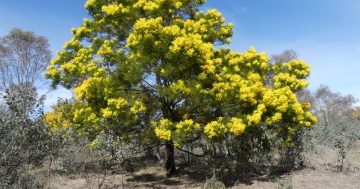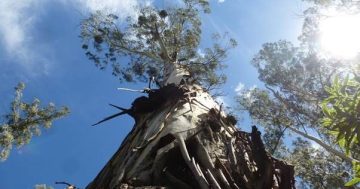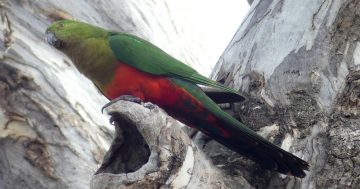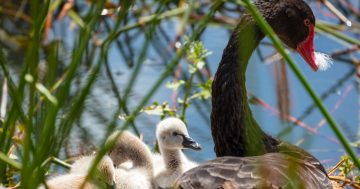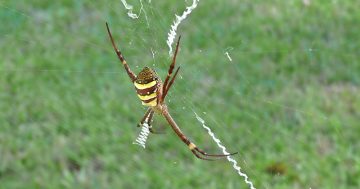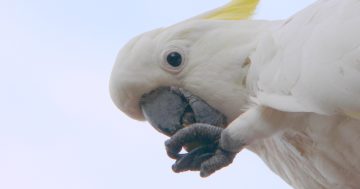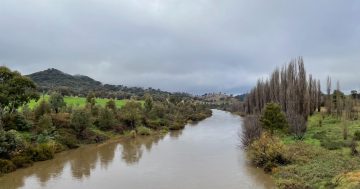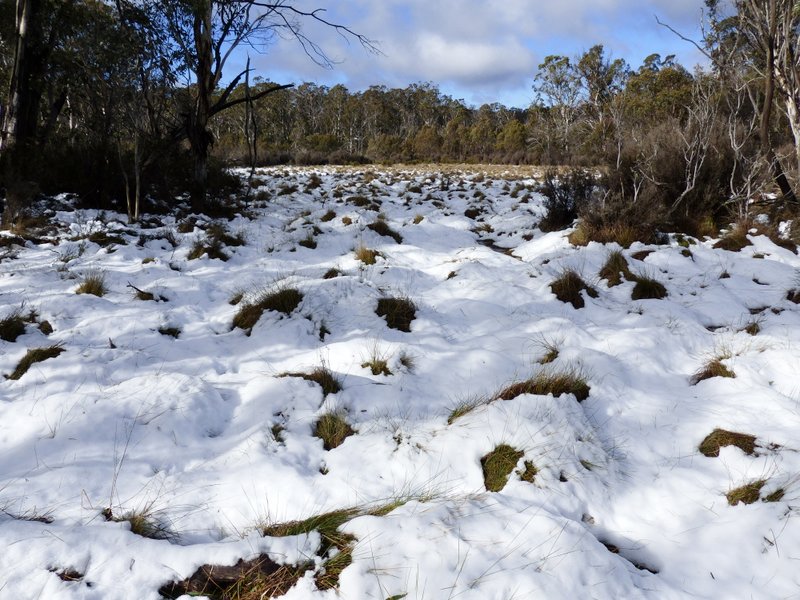
Snow along the Square Rock Track in Namadgi National Park. Photo: Ian Fraser.
Autumn is slipping into winter and Canberra mornings are becoming uncomfortably chilly. Additionally, the odd icy breeze is sliding down from the mountains to remind us that things are a lot tougher up there.
Surviving summer on the roof of Namadgi and Tidbinbilla brought different challenges to those plants and animals that live among the Snow Gums. There were plenty of warm sunny days to promote flowering and breeding, but they began later in the year than they did a thousand metres or more lower down the mountains around Canberra and ended earlier.
This means that it was all a frantic rush. Plants had to produce flowers, compete for pollinators (not such an issue down here where the season is more spread out), produce and ripen seeds and at least get them into the soil, if not get seedlings to a stage where they can survive freezing. All this has to be accomplished in the brief time before the frosts return.
Birds have to find a mate, build a nest, produce eggs, raise the chicks, and get them out of the nest and able to survive alone before the brief summer is over. Insects must do much the same things (though perhaps not the nest-building and chick-raising so much).
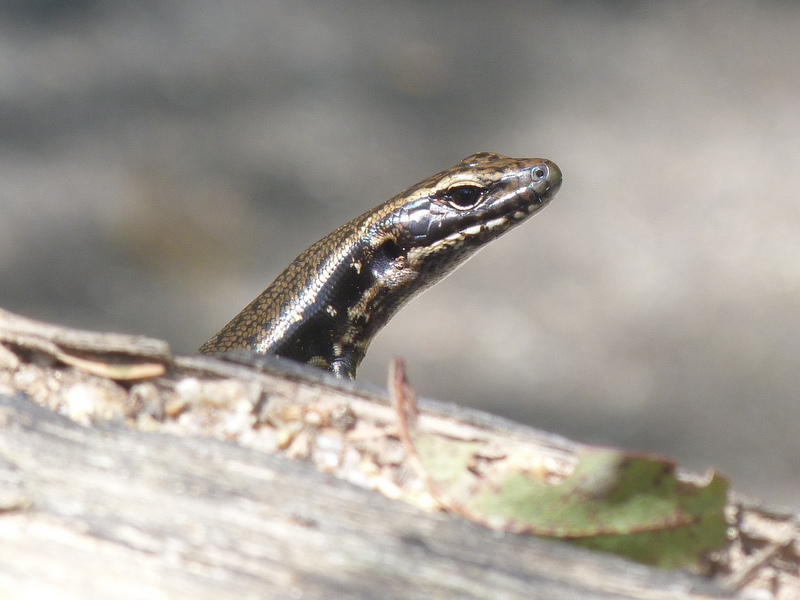
Alpine Water Skinks give birth to live young, allowing more time to feed and grow before going into torpor for the next winter. Photo: Ian Fraser.
Some have evolved special strategies. Many alpine lizards avoid laying eggs in cold soil by having the babies develop in their relatively warm insides as they bask in the sun on rocks and give birth to live young, ready to feed up to prepare for winter. She mates in autumn to avoid wasting time in spring, and fertilisation takes place internally as soon as spring warms her up.
But now that that’s all over, whether successfully or not, it comes down to months of survival.
Some just tough it out. Wombats plough on through the snow regardless. Snow Gums don’t shed snow like cone-shaped Northern Hemisphere fir trees but bear heavy loads of snow and ice that encase whole branches. Smaller shrubs and herbs survive under the snow, as do some small mammals. Some insects can survive in bark crevices, which in turn enables a few small birds (thornbills and treecreepers) to spend winter above the snow line. Antechinuses (carnivorous marsupials but often misnamed ‘marsupial mice’) use snow holes around the base of trees to shelter and forage and thus stay active through winter.
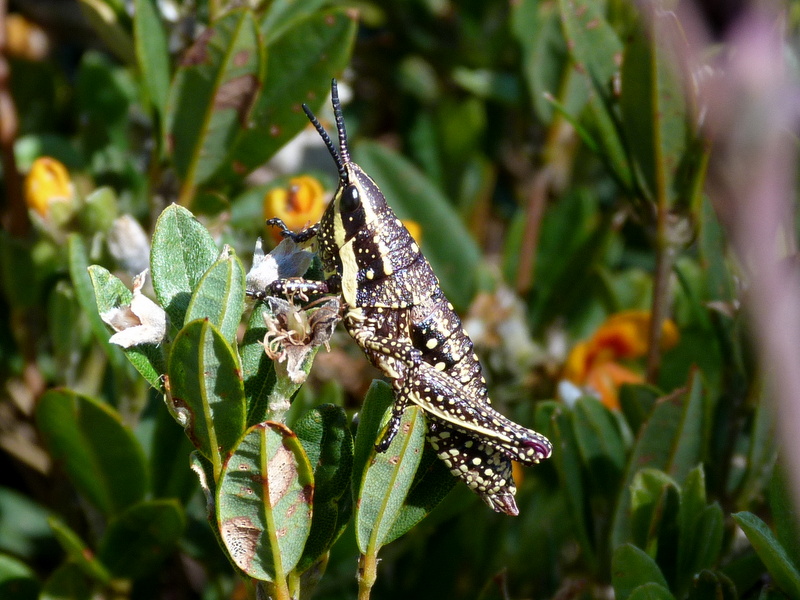
Spotted Mountain Grasshoppers survive winter on the snow by producing anti-freeze in their blood. Photo: Ian Fraser.
The Alpine Spotted Grasshopper, which remains alive and on the surface through winter, unlike most high country grasshoppers, does so by synthesising in its blood a chemical called sorbitol, which we’d call anti-freeze in our car.
Others stay on but sleep through the long, harsh winter. The lizards mentioned before do this, half-frozen under rocks and logs. Echidnas hibernate for some of the time but will suddenly emerge, go for a wander, then settle down again. Yet others, less robust, die and leave their offspring in the form of seeds for plants like daisies or eggs or larvae for insects, including flies, frozen in the soil until spring.
Male Corroboree Frogs called in spring, with a song like a wet finger rubbed on a balloon, from a nest in the wet sphagnum moss, and a responsive female laid a few large eggs in his nest. The tadpoles hatched soon after but now stay in the jelly for six months under the snow until melting snow floods the nest. (They then take three summers and winters to mature.) The adult frogs survive winter under logs in the surrounding Snow Gums.
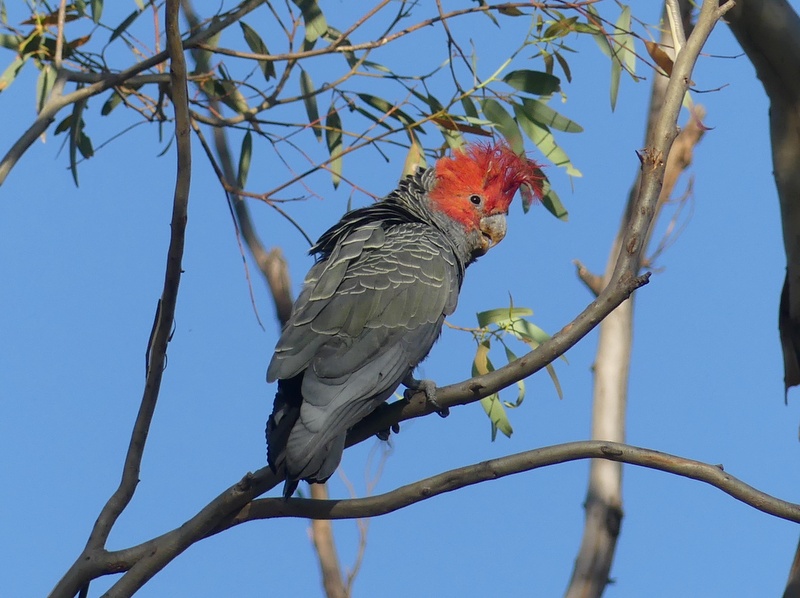
Gang-gang Cockatoos mostly spend summer in the mountains and come down when winter comes. Photo: Ian Fraser.
Yet other animals do the obvious thing and retreat downhill as winter approaches. Large grazers such as Eastern Grey Kangaroos and Red-necked Wallabies move through the forests to lower pastures. Some familiar birds, including Gang-gang Cockatoos, King Parrots, Eastern Spinebills, Flame Robins and many Pied Currawongs, breed up in the mountains and come down to spend winter in Canberra gardens or the surrounding areas.
Some birds, especially larger ones such as Laughing Kookaburras and Red Wattlebirds, move up and down the mountains as the snow expands or melts, staying just below it.
In days and weeks to come, we’ll be focussed mostly on keeping warm, surviving and quite likely planning on escaping winter, or part of it, altogether. Much the same things are happening high in the mountains, capped with snow or clouds; as I said at the start, though, it’s a lot tougher up there.
Ian Fraser is a Canberra naturalist, conservationist and author. He has written on all aspects of natural history, advised the ACT Government on biodiversity and published multiple guides to the region’s flora and fauna.
Original Article published by Ian Fraser on Riotact.



